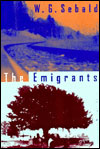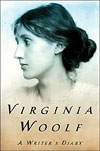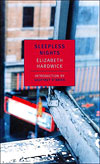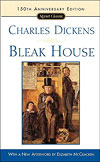
The Enigma of Arrival
By V.S. Naipaul
This novel, published in 1987, was a major departure from Naipaul's earlier works of fiction—a new, hybrid genre that the author has sometimes referred to as "a sequence." It is partly an immigrant's tale, as the narrator leaves his birthplace, the British colony of Trinidad, to live in England, where he will never entirely "settle." But it is also the story of another journey, that of the narrator's development as an artist and an intellectual, a man plumbing the depths of his own consciousness to interpret the world and to discover his place in it. To read this book is to be engaged with the mind of a genius, and Naipaul's mastery of the English language has always struck me as miraculous.
By V.S. Naipaul
This novel, published in 1987, was a major departure from Naipaul's earlier works of fiction—a new, hybrid genre that the author has sometimes referred to as "a sequence." It is partly an immigrant's tale, as the narrator leaves his birthplace, the British colony of Trinidad, to live in England, where he will never entirely "settle." But it is also the story of another journey, that of the narrator's development as an artist and an intellectual, a man plumbing the depths of his own consciousness to interpret the world and to discover his place in it. To read this book is to be engaged with the mind of a genius, and Naipaul's mastery of the English language has always struck me as miraculous.

A Woman in Berlin
By Anonymous
Anonymous was a 34-year-old journalist living on her own in Berlin at the end of World War II. Her captivating diary covers eight weeks in the spring of 1945, when the city was occupied by the victorious Russian army. It is a story of hunger and rape, fear and humiliation, corruption and shame. Anonymous died in 2001. Her story will live as long as there is a readership for the literature of war, conquest, and the will to survive.
By Anonymous
Anonymous was a 34-year-old journalist living on her own in Berlin at the end of World War II. Her captivating diary covers eight weeks in the spring of 1945, when the city was occupied by the victorious Russian army. It is a story of hunger and rape, fear and humiliation, corruption and shame. Anonymous died in 2001. Her story will live as long as there is a readership for the literature of war, conquest, and the will to survive.

The Emigrants
By W.G. Sebald
One of the fascinating things about The Emigrants is how difficult it is to describe. It is composed of a quartet of stories about four people living in exile from Germany. Only slowly does the reader begin to connect the stories and to understand that this is a narrative about the Holocaust. Sebald's prose has a hallucinatory force, and this unique work, which is as much a documentary as a work of fiction, leaves the reader awed and shaken. Though it speaks of terribly painful things, its wisdom and beauty lift up the heart.
By W.G. Sebald
One of the fascinating things about The Emigrants is how difficult it is to describe. It is composed of a quartet of stories about four people living in exile from Germany. Only slowly does the reader begin to connect the stories and to understand that this is a narrative about the Holocaust. Sebald's prose has a hallucinatory force, and this unique work, which is as much a documentary as a work of fiction, leaves the reader awed and shaken. Though it speaks of terribly painful things, its wisdom and beauty lift up the heart.

A Writer's Diary
By Virginia Woolf
This volume was first published in 1953, long before the complete Diary would become available. The editor, Woolf's husband, Leonard, chose only extracts that related to his wife's writing career. One reviewer, W.H. Auden, wrote, "I have never read any book that conveyed more truthfully what a writer's life is like.…" I read it around the same time that I began reading Woolf's fiction, and it has meant as much to me as any of her novels—perhaps more. In her reflections on her life as a woman and a writer, I have taken boundless comfort as well as delight. As another reader, her friend Elizabeth Bowen, concluded, "The spring and principle of her art was joy."
By Virginia Woolf
This volume was first published in 1953, long before the complete Diary would become available. The editor, Woolf's husband, Leonard, chose only extracts that related to his wife's writing career. One reviewer, W.H. Auden, wrote, "I have never read any book that conveyed more truthfully what a writer's life is like.…" I read it around the same time that I began reading Woolf's fiction, and it has meant as much to me as any of her novels—perhaps more. In her reflections on her life as a woman and a writer, I have taken boundless comfort as well as delight. As another reader, her friend Elizabeth Bowen, concluded, "The spring and principle of her art was joy."

Sleepless Nights
By Elizabeth Hardwick
The author of this short, impressionistic novel was my teacher when I was an undergraduate. She was also the first professional writer I ever met. Part fiction, part autobiography, this is one of the most original books I have read. Filled with imaginative meditations on a range of subjects, from Billie Holiday to the lives of cleaning women, it has been celebrated for its gorgeous prose. According to Susan Sontag, Hardwick writes "more beautiful sentences than any living American writer."
By Elizabeth Hardwick
The author of this short, impressionistic novel was my teacher when I was an undergraduate. She was also the first professional writer I ever met. Part fiction, part autobiography, this is one of the most original books I have read. Filled with imaginative meditations on a range of subjects, from Billie Holiday to the lives of cleaning women, it has been celebrated for its gorgeous prose. According to Susan Sontag, Hardwick writes "more beautiful sentences than any living American writer."

Bleak House
By Charles Dickens
This is a novel you don't so much read as move into for the duration. For me, it's Dickens's most serious and most entertaining work. The enchantment begins on the first page, with the description of London's "implacable November weather" and the famous fog. I know a writer who used to read this passage for inspiration every day before sitting down to work. All of English Victorian society is here. If nothing else about that world existed, we'd still know it thoroughly from these pages. Mystery, love story, satire, sociological critique—this grand, capacious novel contains them all. But at its core—and like all of Dickens—Bleak House is a kind of fairy tale, a story about good and evil, and the redemptive power of love.
By Charles Dickens
This is a novel you don't so much read as move into for the duration. For me, it's Dickens's most serious and most entertaining work. The enchantment begins on the first page, with the description of London's "implacable November weather" and the famous fog. I know a writer who used to read this passage for inspiration every day before sitting down to work. All of English Victorian society is here. If nothing else about that world existed, we'd still know it thoroughly from these pages. Mystery, love story, satire, sociological critique—this grand, capacious novel contains them all. But at its core—and like all of Dickens—Bleak House is a kind of fairy tale, a story about good and evil, and the redemptive power of love.




